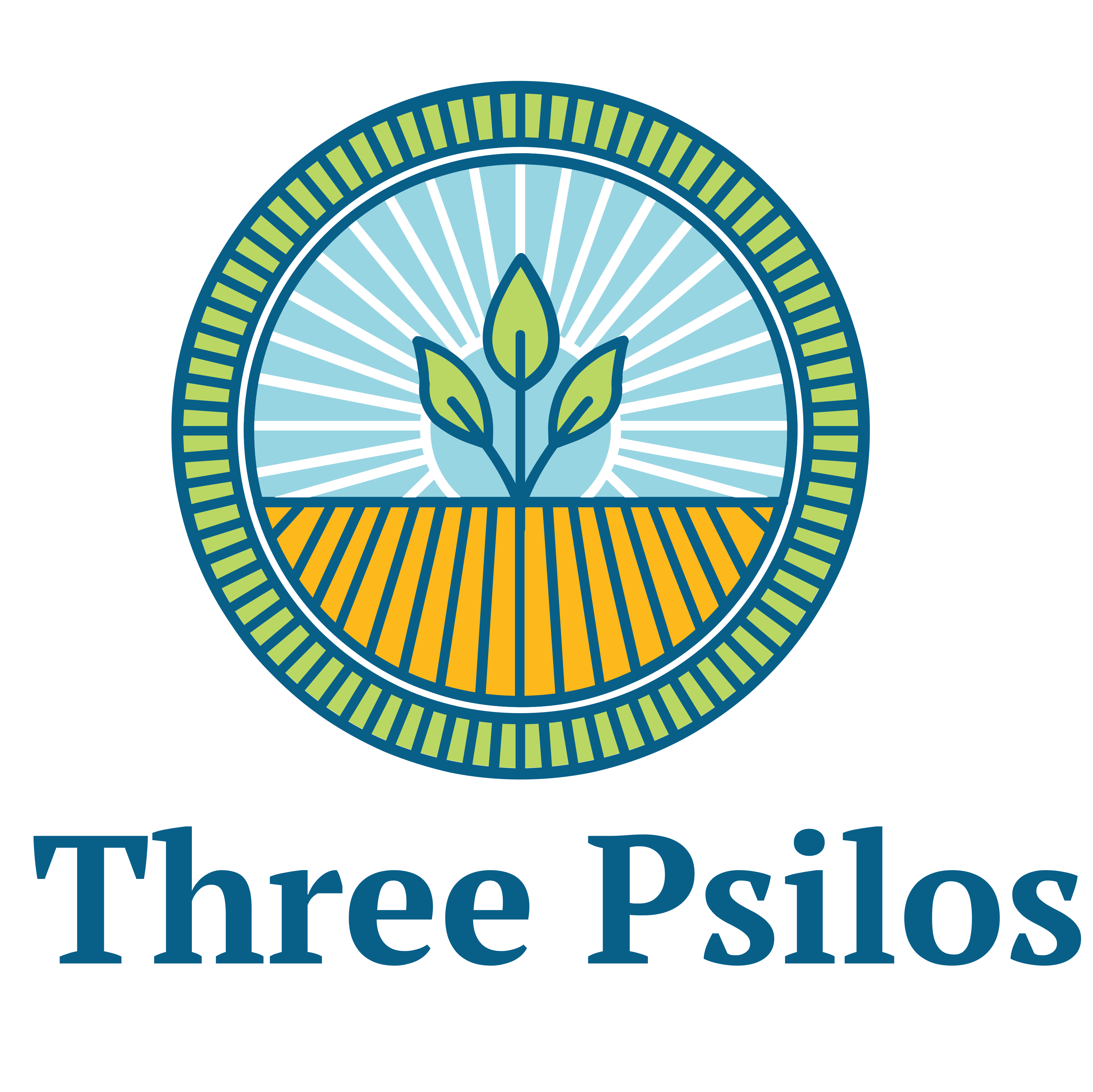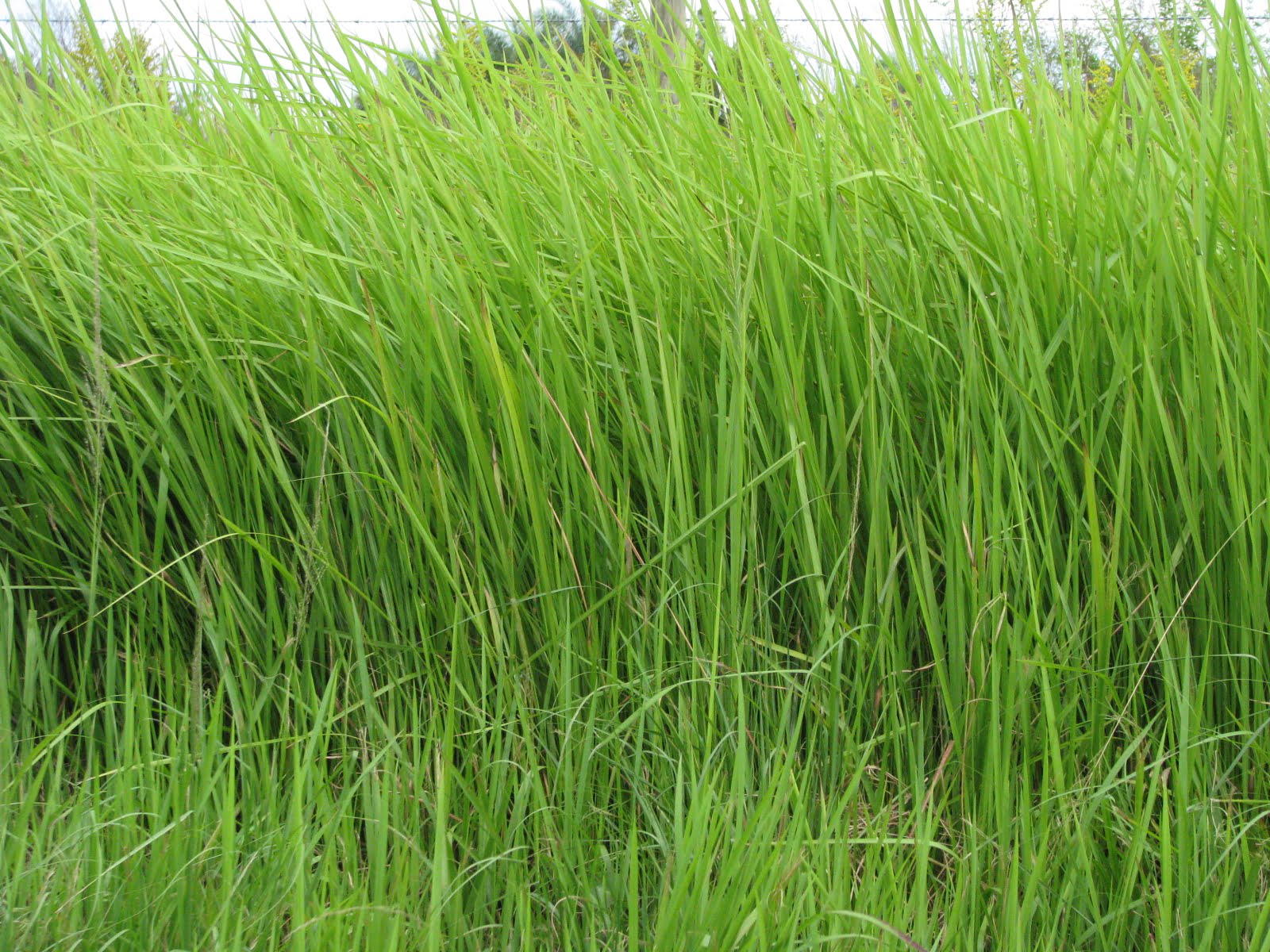Cogongrass (Imperata cylindrica), or sometimes ‘cogon grass’, is an extremely invasive, non-native species of grass. This Southeast Asian perennial was originally introduced into the U.S. in 1911 near Mobile, Ala. as packing material in a shipment of plants from Japan.
First described in the times of Napoleon, Cogongrass’s full botanical citation is:
IMPERATA CYLINDRICA (Linnaeus) Palisot de Beauvois, Ess. Agrostogr. 8, 165, 177. 1812.
The first Cogongrass collected for the University of South Florida’s “Vascular Plants of Florida” Herbarium, was Found by George R. Cooley and Joseph Monachino on Chinsegut Hill in Hernando County in 1958.

Cogongrass collected by the team appeared atop one of the highest elevations in Central Florida; the Chinsegut Hill Manor House. Originally built in the 1850s, Chinsegut Hill is listed on the National Register of Historic Places. Historic gardens are well-known vectors for non-native invasives, mostly due to the implementor’s ignorance of the long-term impact of installing the various specimens. In the nineteenth century, these specimens, usually obtained from world-wide origins, would indicate the high social status of the garden’s owner. Brazillian Peppertree, for example, was a highly sought-after ornamental in the late nineteenth century. It also seemed to be a good, holly-like crop to sell as Christmas decorations. Closely related to Poison Ivy, it has since become a scourge across the state more than one hundred years later.
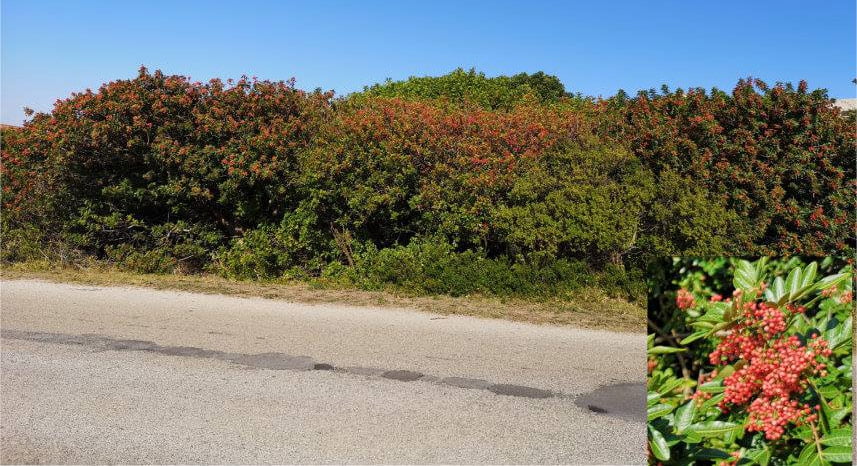
A poor grazing option for any animal, it is not likely anyone intentionally attempted to plant Cogongrass in the late 1800s. The rhizomes, or crawling roots, of the Cogongrass were accidentally left in a root ball of an imported ornamental, and spread from there.
Infection
Cogongrass spreads most effectively underground using its rhizome system. The roots have no problem forming a complete plant totally underground. It considers its grass blades as disposable. The roots barely spend any resources on their blades of grass, which is why they are such poor forage for animals. The rhizomes, instead, grow everywhere, and they try in every direction; slowly, but constantly. Very similar to the idea of zombies. The tips of the crawling roots can even pierce other species’ roots, directly robbing them of their nutrients.
Cogongrass is a growing machine meant to obliterate all other species. And given enough time, it will.
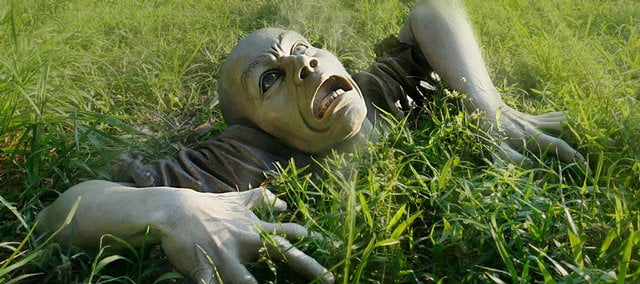
If the zombie-like crawling roots of Cogongrass weren’t scary enough, they also produce tiny seeds that are carried, on average, 16 feet from the flower’s origin.
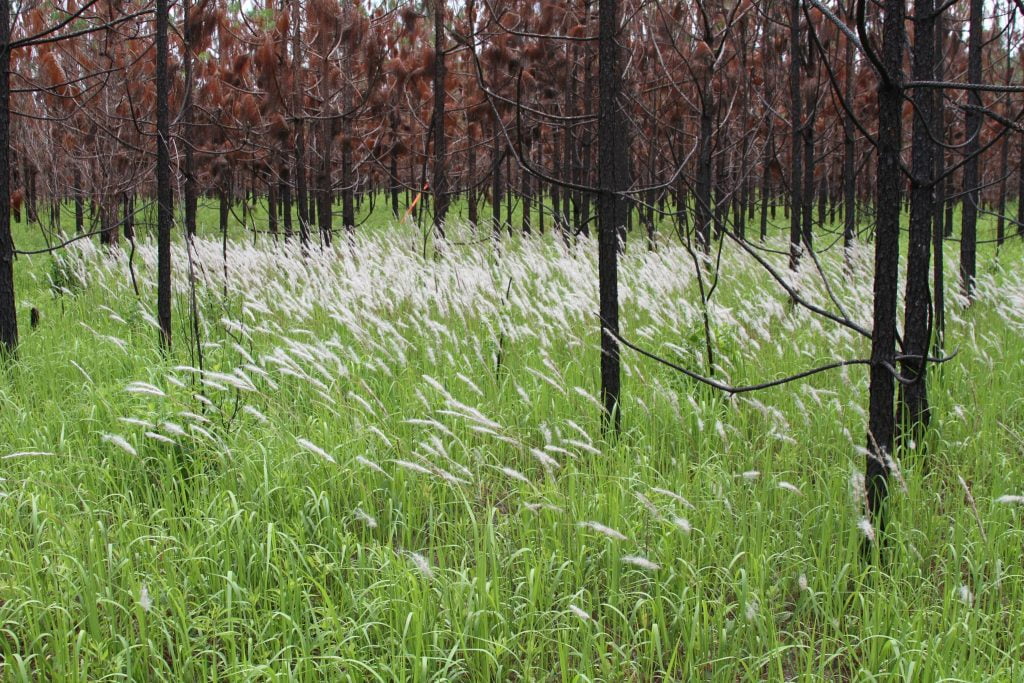
This means a neighbor’s innocent-looking, flowering grass, flowing gently in the wind can easily spread across the street or fence, and settle on your land. Additionally, birds such as Mourning Doves (Zenaida macroura) will eat the seeds, thereby spreading them everywhere they go. Usually, however, they will “distribute” Cogongrass seeds while resting themselves on your fence.
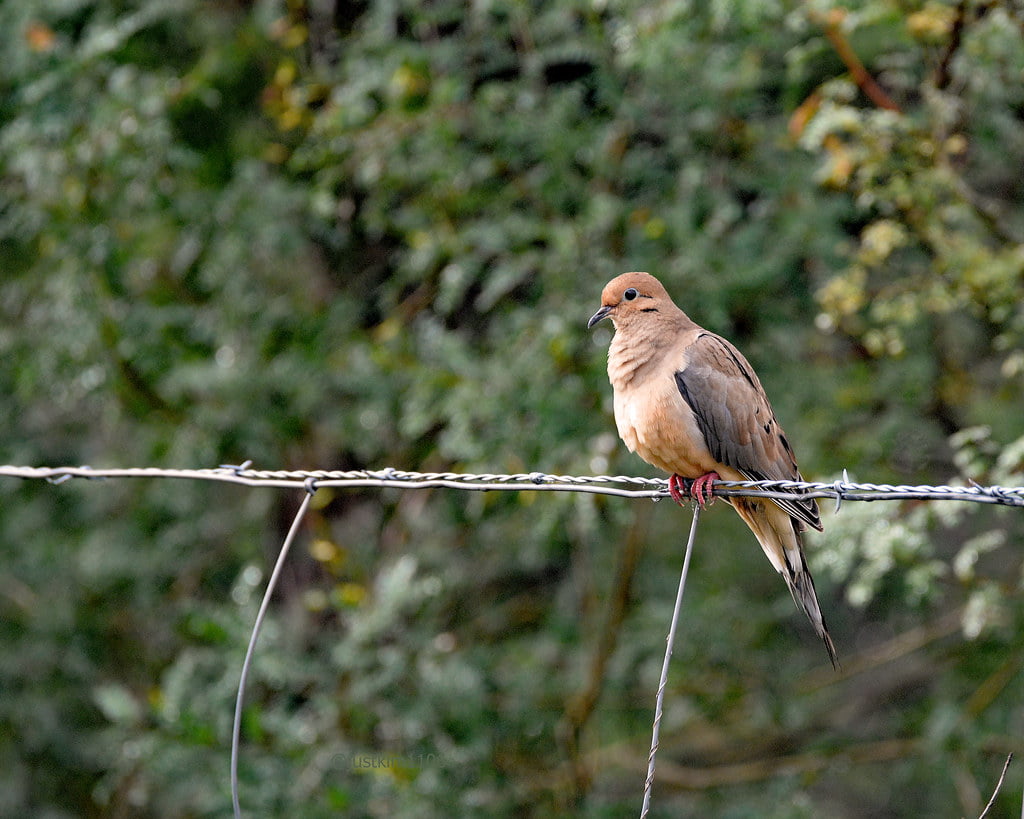
Delaying the Inevitable
Contrary to instinct, growth of Cogongrass is not slowed by mechanical cutting of its blades. The rhizomes continue to crawl their way through your field or yard. In fact, with its nice, clean haircut, Cogongrass seems more like a crabgrass that can be ignored. And it usually is ignored. Meanwhile, it continues to spread at nearly the same rate.
To add fuel to the fire, burning will only further help Cogongrass. While fire might remove its disposable blades in a different way, it still doesn’t harm the root structure below the sand, which continues to spread and thicken.
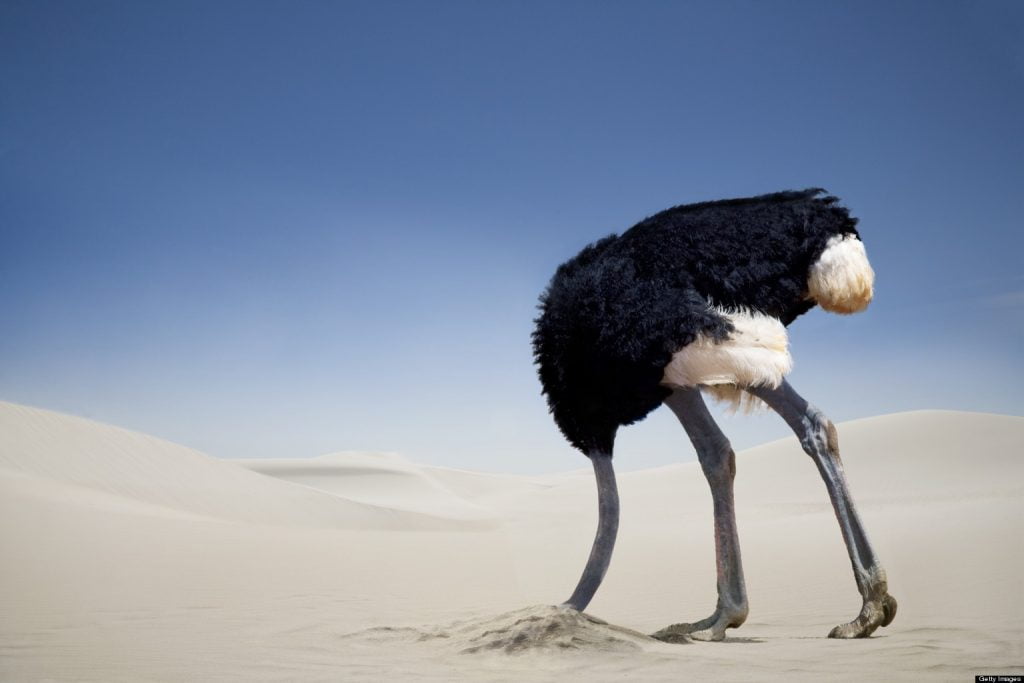
Effective Treatment of Cogongrass
The good news is, these zombie-like rhizomes can only reach about six inches (6″/15cm) of depth below the surface. That means tilling becomes an option to reduce the crawling roots’ effectiveness, and eventually kill off all Cogongrass roots. This may not be practical in many cases, but in open fields that are nearly 100% Cogongrass, tillage with discs becomes an affordable choice. This must be followed by over-seeding with native grasses. Tilling, however, proves be difficult in or around Central Florida’s oak hammocks. A hammock is an “island” of hardwood trees in an otherwise different ecosystem, such as a scrub, or a sandhill community of Longleaf Pine (Pinus palustris). On the ridges, these hardwood trees are usually “running oaks,” which are species of the genus Quercus which sends their roots across the sand, in search of new places to sprout more trunks.
Truly effective, long-term control of Cogongrass will require the careful application of herbicide over multiple seasons. While the maximum depth for Cogongrass may be six inches, those six inches can, and eventually will, form a nearly solid mat of roots, making it difficult for the herbicide to penetrate the full thickness of the mat. Since the deepest roots might not be killed by any one application of herbicide, they will eventually reach the surface again and start new blades of grass. Careful attention must be paid to how much of the herbicide is being applied and exactly where it has been applied. The use of GNSS/GPS equipment is highly recommended to accurately track any spraying.
Further, the application of the herbicides for Cogongrass is not as simple as mixing a certain number of ounces into a certain volume of water and just start spraying. Calculations must be done that administer a specific number of ounces of product per certain area of Cogongrass. Cogongrass rhizomes will require close attention in specific areas over a long time for complete eradication. Complete eradication should be expected within three calendar years from the initial treatment.
Three Psilos recommends applying both glyphosate, for killing the grass blades, as well as imazapyr, which has a lingering impact on Cogongrass roots. These, together with a surfectant to help consistently apply the product to the blades themselves, should ensure the eradication of Cogongrass. As a product, Three Psilos, Inc. uses Ragan & Massey’s RM43, because it is available in many farm and garden stores. RM43 is a combination of two herbicides and surfactant. It is rainfast in two hours and there are no entry restrictions to sprayed areas for pets or people after the spray has dried. Further, it has been shown imazapyr has little effect on pine tree roots, making it even better for use on non-native grasses in pine stands.
Our Services
Three Psilos, Inc. cares about Central Florida’s xeric upland sandhill and scrub habitats. To that extent, we want to see Cogongrass eradicated, and have made it our mission to help.
We offer the services of professional landscaping, merged with the careful application of science specific to Florida’s interior dune ecology. This starts with a Site Ecology Recommendation.
Site Ecology Recommendation
Three Psilos, Inc. is proud to offer Site Ecology Recommendations across Central Florida. These are ecology reports that are meant to focus on a single species at your site. Whether an endangered vertebrate species like a Gopher Tortoise (Gopherus polyphemus), or a Category 1 non-native invasive vascular plant, such as Cogongrass, Three Psilos, Inc. can help you make more informed decisions about the management and/or potential value of your site, and at a speed much faster than any other agency.
Focusing on one specific species within the context of the Central Florida ridges reduces overall costs required, and gets real science into your site much faster than any government agency can, while at a much lower cost than other private ecology firms. Have you wondered if you have a specific species at your site? Is there a species you would like to have? Or would like to have removed? A Site Ecology Recommendation is a powerful tool to help you quickly achieve your vision for your site.
Further, your Site Ecology Recommendation will contain everything needed to create a Site Management Plant, to hire professionals and act as your own General Contractor, or to even do all the management work yourself (DIY). It will include a site description, information about your species of interest, the coordinates of anything related to your species exported as GIS information, as a graphical map, or as a set of waypoints from your site. After the Site Visit, a complete PDF document of the Site Recommendation will be sent via email. This will help make support and management of your site more affordable, and makes specialized, or even endangered, species more obtainable for your site.
Additionally, a Site Ecology Recommendation can be used to help negotiate the price of any lot or land. Finally, a Site Ecology Recommendation can be invaluable evidence in a court setting.
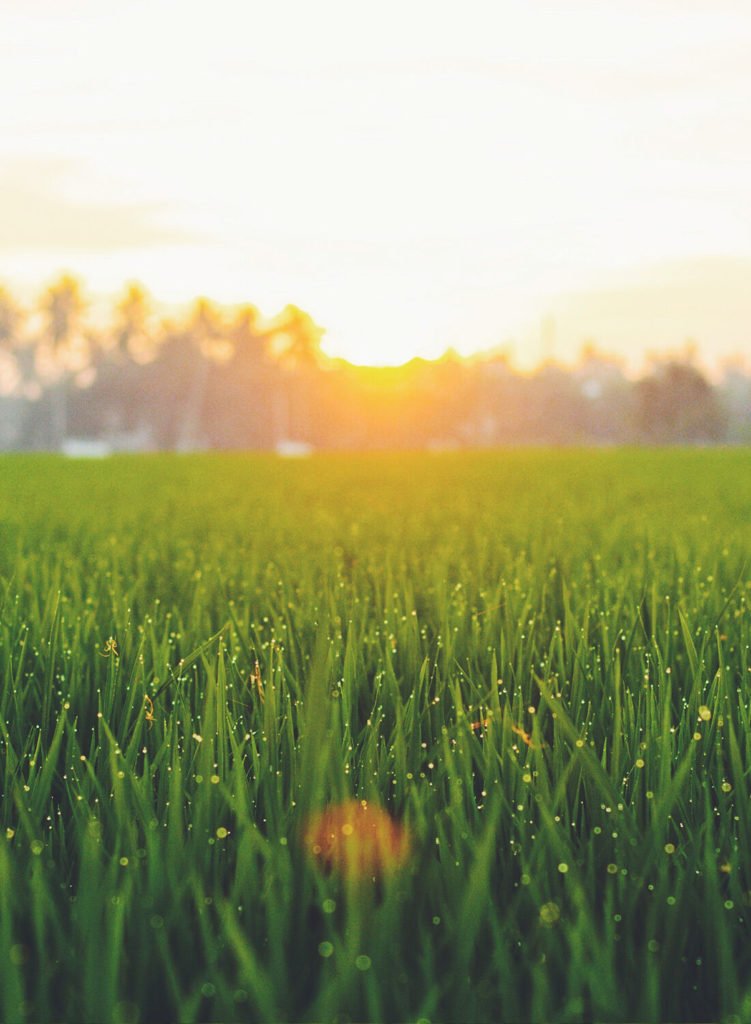
Site Ecology Recommendation
Three Psilos, Inc. has a mission to restore Central Florida’s xeric upland Sandhill and Scrub communities on the Lake Wales Ridge, and on all the ridges… one day at a time.
We use “Applied Ecology” to help heal the land by introducing, removing, or managing certain species in effort to gain even more of our desired endemic species. If you live on or around the Lake Wales Ridge, or…

Cogongrass Treatment (per 1,000 sq.ft./93 sq.m.)
Treatment of your Cogongrass infection, which includes three site visits with hand-applied spot treatments by Florida ecologist.
Further Reading
Armed with the below documentation, anyone can get started helping fight The Battle of the Cogongrass. Three Psilos, Inc. wants to see Cogongrass eradicated from all of Florida. We aren’t doing it for the money, we are doing it for the land. It’s not a business, its a mission.
